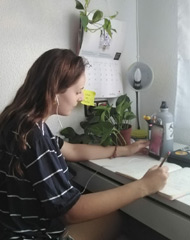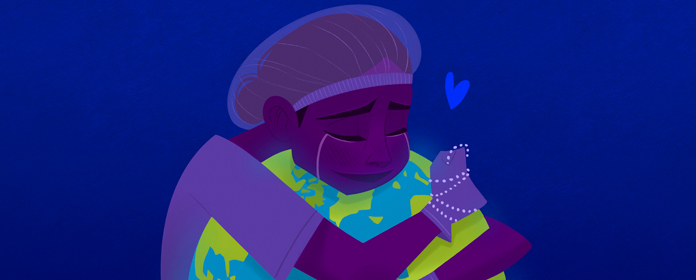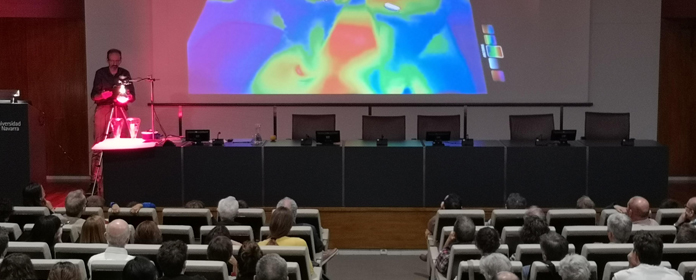Invasive alien species, present at campus of the University of Navarra
An informative exhibition gathers the main characteristics of aquatic invasive alien species in the Iberian Peninsula.
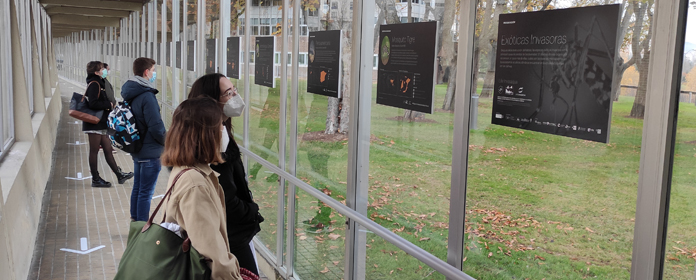
The Science Museum of the University of Navarra has organized an informative exhibition on invasive alien species, in order to disseminate the impact that these species have on ecosystems. The aim of this exhibition is to give continuity to the scientific knowledge dissemination activities planned by the Science Museum in the Science Week framework .
The sample brings together 21 information panels that show the characteristics of the main aquatic invasive alien species in the Iberian Peninsula, where they are found, and the real impact they have on the environment.
"In exhibition we place special emphasis on those species that cause major problems in Navarra. The proliferation of sport fishing of species such as, for example, European perch, catfish or pike, with serious impacts on aquatic ecosystems, are one of those big problems that we can find in the region", says Rafael Miranda, professor of the School of Sciences of the University of Navarra and manager as partner of project LIFE INVASAQUA.
This exhibition is supported by project LIFE INVASAQUA, a project whose main goal is to support communication and training on Aquatic Invasive Alien Species in Spain and Portugal.
"The aim is to raise awareness of the problem of these species in our territory in order to sensitize the general public, and to offer simple tools to help us combat their expansion," says Professor Miranda.
The exhibition will be on display at Sciences Building of the University of Navarra during the whole month of December at schedule from Monday to Friday from 9 am to 8 pm and on Saturdays from 9 am to 1.30 pm.
Species that impact the environment and have repercussions for the EconomicsAccording to Professor Miranda, invasive species create a significant environmental and economic impact in the areas where they live and, for this reason, it is very important to inform society about the damage caused by these species at knowledge . "There are many programs of study that tell us how invasive alien species affect the biodiversity of the planet. There are others programs of study that show us that, if it doesn't go well for biodiversity, it doesn't go well for us. In addition to the damage to the environment, it is beginning to seriously affect our pockets. A clear example of this is the zebra mussel".
For Miranda, it is very important to raise awareness among citizens so that they collaborate with the resolution of this problem: "It is about having a proactive attitude, from alerting the administrations of the presence of one of these species to denouncing the illegal introduction of any of them and even bad practices in the rivers. The citizen partnership in this framework is vital," he concludes.
LIFE INVASAQUA is a project of governance and communication in which four universities(University of Murcia, University of Santiago de Compostela, University of Évora and University of Navarra), the EFE Agency, the International Union for Conservation of Nature, the Museum of Natural Sciences of Madrid, the Iberian Society of Ichthyology, and the Associaçao Portuguesa de Educaçao Ambiental (ASPEA) work together. The Fundación Biodiversidad and the Government of Navarra also collaborate.
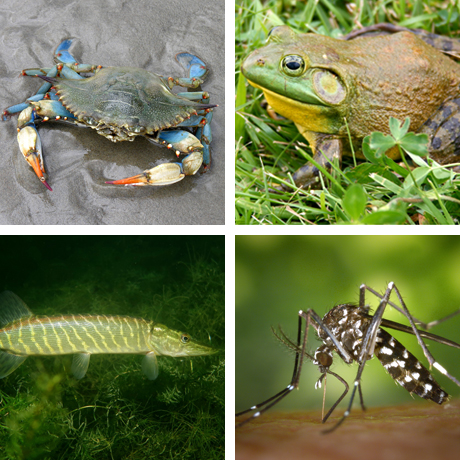
Callinectes sapidus (Jeremy Thorpe)
Lithobates catesbeianus (Carl D. Howe)
Esox Iucius (Kamiel Kemepeneers)
A Albopictus (James Gathany)

